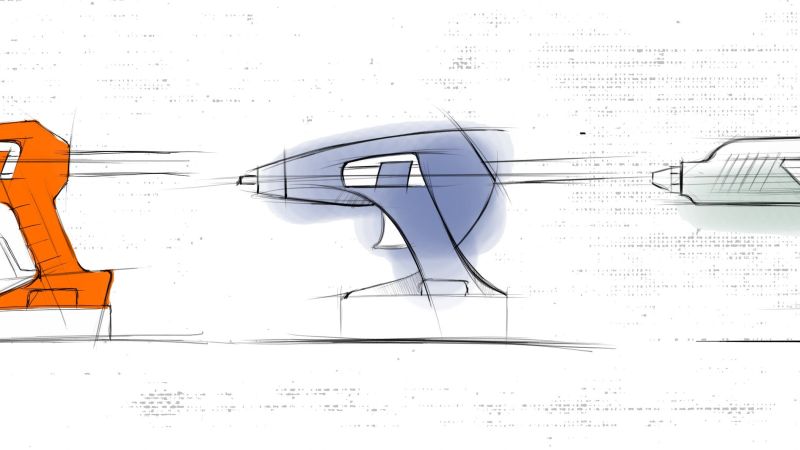Join us on Wednesday, September 8 at noon Pacific for the Industrial Design Hack Chat with Eric Strebel!
At Hackaday, we celebrate all kinds of hardware hacks, and we try not to judge based on appearance. After all, every product starts out on the breadboard, or as a prototype built with hot glue and tape. What’s important is getting it to work, at least at first. But there comes a time when you’ve got to think about how to make your project look like something people want to use, how to position controls and displays in a logical and attractive way, and how to make sure your thing can actually be built.
Turning a project into a product is the job of an industrial designer. Pretty much everything you use, from the toothbrush by your sink to the car you drive to work in bears the marks of industrial design, some more successfully than others. Eric Strebel has been doing industrial design for years, and he keeps feeding us a steady diet of design tips and tricks through his popular YouTube channel. He’ll stop by the Hack Chat to get a little more in-depth on industrial design principles, and how you can make your projects look as good as they work.
 Our Hack Chats are live community events in the Hackaday.io Hack Chat group messaging. This week we’ll be sitting down on Wednesday, September 8 at 12:00 PM Pacific time. If time zones have you tied up, we have a handy time zone converter.
Our Hack Chats are live community events in the Hackaday.io Hack Chat group messaging. This week we’ll be sitting down on Wednesday, September 8 at 12:00 PM Pacific time. If time zones have you tied up, we have a handy time zone converter.
















Attractive or functional. Rarely can be both. Function never needs a makeover, I want the winXP look forever. Maintain ADA and access standards. Curvy rows of keys kerned to fit in a shape made by a sketch artist with a few quick yet redundant strokes of a charcoal stick, no thanks. It becomes a square keyboard shoved into a round hole.
Car stereos are a designer muck-up. You’re in traffic and you have to deal with sliver shaped and tiled “buttons” that blend into each other. Now that they are mechless they just make the display bigger with animated gibberish adding to distractions instead of bigger buttons in that single DIN space.
Square circuit boards vs. round or oval are easier to produce. No waste to break off.
I’ll admit that some designs are not thought through well at all. But good design leads not only to beautiful products, but to functional ones that fit the human form factor. There’s a lot of usability consideration put into good design — in fact, I’d argue that it can’t be good design if the designer didn’t take usability into account.
https://en.wikipedia.org/wiki/The_Design_of_Everyday_Things
Form and function are not different things – despite the tribalistic marketing vs. engineering propaganda
That book isn’t infallible either. E.g there’s a piece about how AA cells are “wrong” because the design allows them to be inserted with the wrong polarity. That’s the whole *point* of cells like this – they can be ganged for more current OR higher voltage.
It’s a great read and has some useful tips, but if you meet an engineer or a designer who treats it like a textbook (or a bible!) then beware :-)
Functional can become attractive much more easily than attractive can become functional.
Many people mistake familiarity with function. People focus on trivial cosmetic changes whereas the actual OS has many meaningful improvements. But because it’s not exactly what people already know it’s wrong, no matter how good it is.
> Car stereos are a designer muck-up.
That is why I like to “upgrade” old (before ~1996) original car radios with SBC and other stuff instead of installing new fancy crap.
As for all that “industrial” design, especially electric hand tools – I could forgive it only in exchange to the machined cast stainless steel body that could be easily taken apart with all the interhals mounted to only one body piece and metal gears inside. But I think there is some hidden designer-manufacturer law that oblige to implement all that “industrial” design with the worst possible plastics (like unglueable and fragile PA66 GF-XX), mount internals to every piece of the body to make it impossible to turn it on in disassembled state and do other weird things.
Really, design could be functional and attractive when that design buld around functionality. I.e. engineers completely develop a device to be as reliable and useful as possible, and only after that, designer create a nice body around it, continuously checking every tiny bit of his art with engineers. However it is always happens other way, when designer think out some shape, show it to managers and then, engineers forced to push everything functional inside that piece of “art”. There could be some exceptions like planes or rockets, but I don’t know such exceptions in modern everyday things you could buy.
And those music players on smartphones with small control buttons located in a way you can’t navigate with thumb only and you train your aimimg skills like there is no space on that 6″ screen to fit decent size buttons.
I imagine that 3D printing has vastly changed the industrial engineers job. Especially when one considers all the different types available.
https://youtu.be/DMWzMpjSJLM